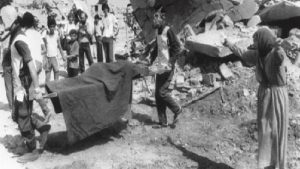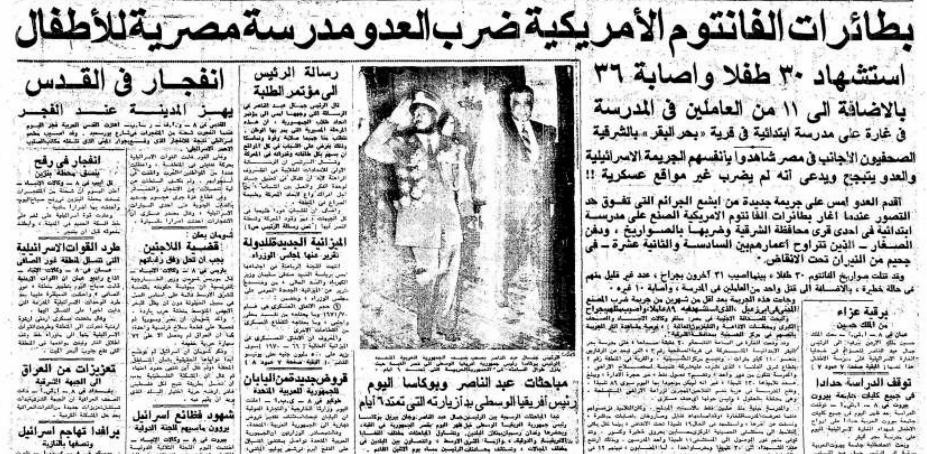It was a Wednesday morning — 8 April, like today. Mothers packed their children’s lunch and waved them off, teachers sat in class preparing lessons for the day, and children journeyed to another school day.
None of the villagers of Bahr Al-Baqar — an Egyptian village south of Port Said — could have predicted such a seemingly mundane day would forever scar their community; soon enough, it would be known by its inhabitants as Al Yom Al Eswed (The Black Day).
Historically, it has been flagged as the Bahr Al-Baqar School Bombing, occurring more than 50 years ago.
“I was in math class, like any other day. I was sat next to my best friend, Ahmed. My pencil fell, and I went underneath the desk to reach it. I never thought it would be my lifeline. I survived, but Ahmed died,” recalls Ahmed El-Demery, a survivor.
The Unfolding of a Tragedy
The Bahr Al-Baqar Primary School was located in the village it is synonymous with, which is considered a part of the Sharqiya province. On 9:20 AM 8 April 1970, the single-story school was destroyed by Israeli Air Force bombings.
Of the school’s 130 students, 46 were killed and over 50 wounded. An additional 11 school staff members were also injured during the objectionable event.

Image Credit: Youm7
The blitz occurred during a violent period between Egypt, Jordan, the Palestine Liberation Organisation (PLO), and Israel: a series of on-and-off skirmishes from 1967 to 1970, otherwise known as the War of Attrition.
During that period, Israel planned a series of attacks into Egypt’s Eastern regions, codenamed Operation Priha; it aimed to coerce Egypt into a truce by striking areas past the Suez, closer to Cairo.
The Aftermath
Following the news reports that revealed the massacre, Israel claimed that it had thought the school was inside an Egyptian military base. Moshe Dayan, then-Defense Minister of Israel, claimed that the school was a front for military training and weapon storing.
No evidence was ever presented to support this claim.
“Israel said the school trained soldiers, but no, there were no soldiers. We were a school and there were no soldiers near [the village],” Hussein Farrag, a survivor of the bombings, refutes in an interview.
Egypt’s United Nations (UN) Ambassador at the time, Mohamed El-Zayyat, strongly condemned the attacks in a letter addressed to the Secretary-General.
“These children were cold-bloodedly murdered by Israelis, flying United States-supplied Phantom jet planes based and operating from a part of Egypt, which is occupied, in defiance of the Charter of the United Nations and its resolutions,” wrote El-Zayyat.

“[Tekoah] declared that Israel regretted any loss of life but if there were casualties, including a number of youths, the responsibility lies with the Egyptian authorities for having placed them in a distinctly military installation within a zone of hostilities,” read the bulletin.

Image Credit: Youm7
Whether it was an intended war crime or an error in reconnaissance, as Israel claims, the damage had been undoubtedly done to the village.
Eight years following the incident, the film, Al ‘Omr Lahza (Life Is Short, 1978), capsulated the tragedy through a song. With time, The Black Day of Bahr Al-Baqar became immortalized by the installation of a museum in memory of the massacre, serving as a constant reminder of the fragility and innocence of children during wartime.
To most Egyptians, the museum is a dark relic of history. To some of the few surviving school children — now senior citizens — it is a scar that will never heal.“When I see the picture behind me [of me on the hospital bed], I feel like leaving the place. It reminds me of a time that I want to forget but can’t. Even my own mother couldn’t recognize my face,” Alsayed Mohamed tearfully remembers.







Comments (0)